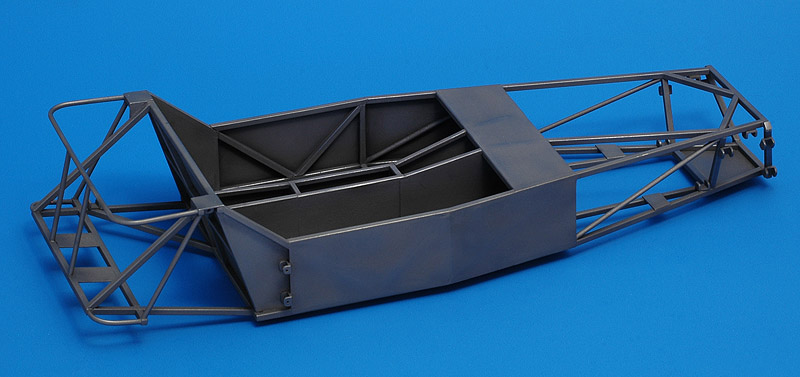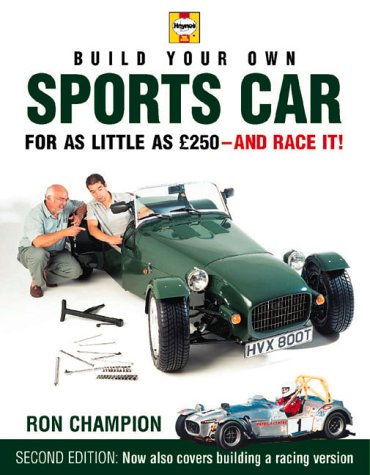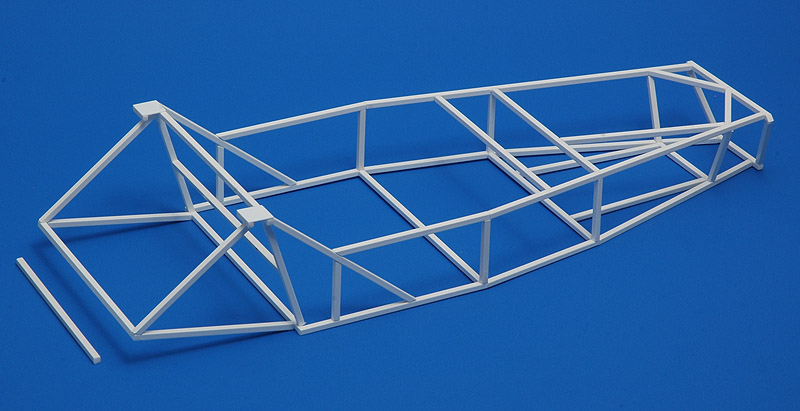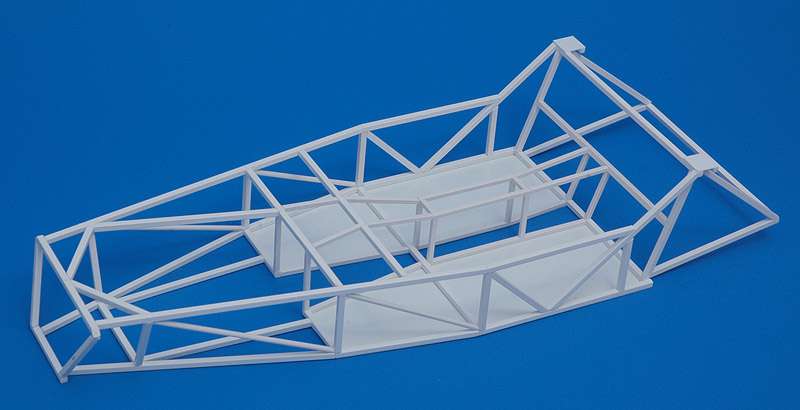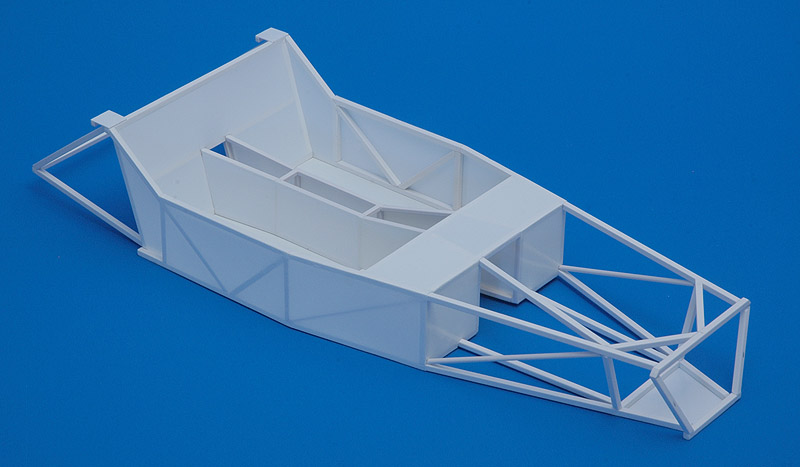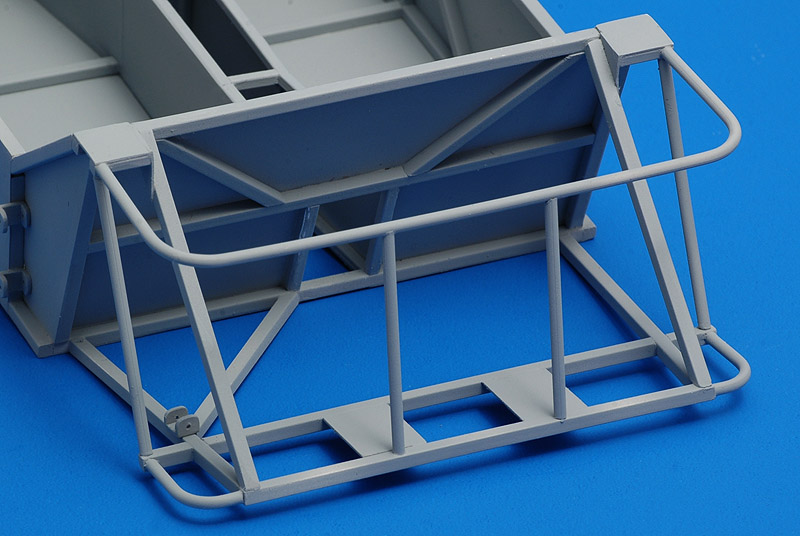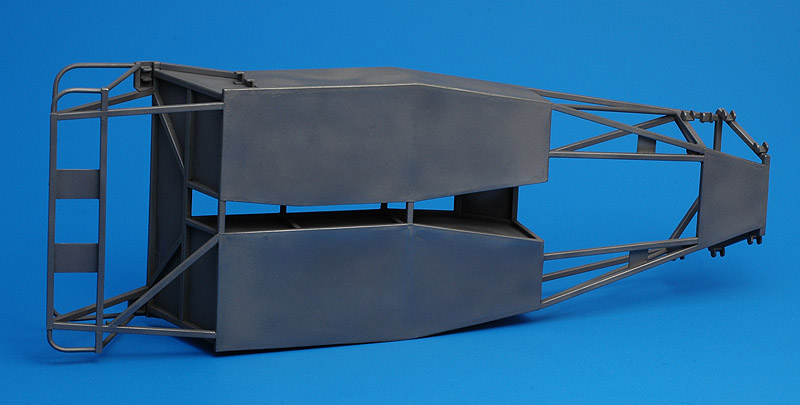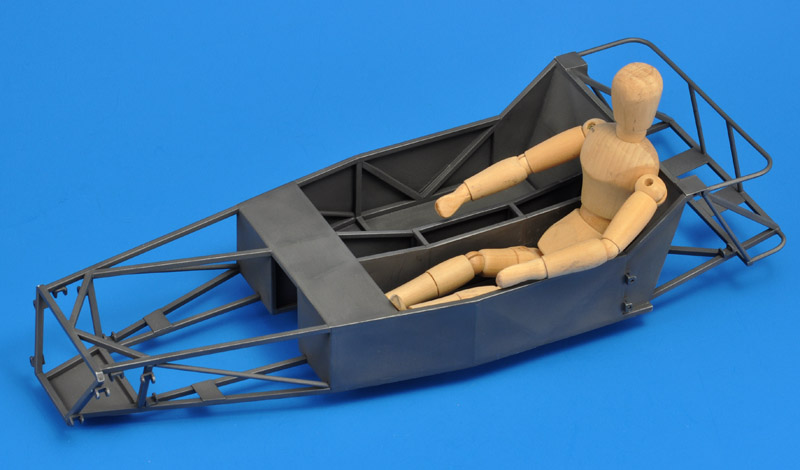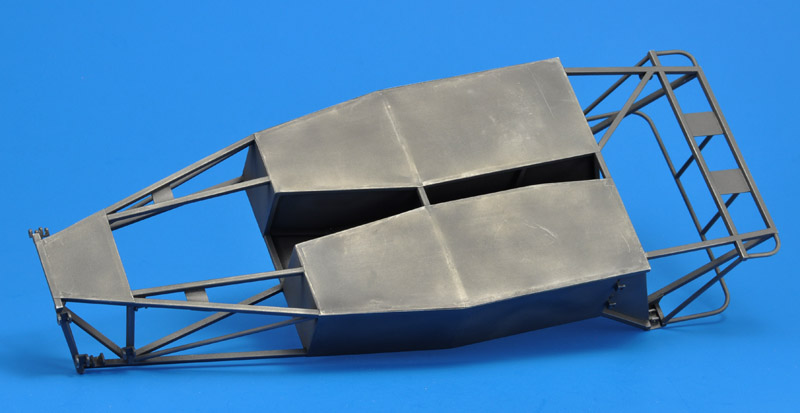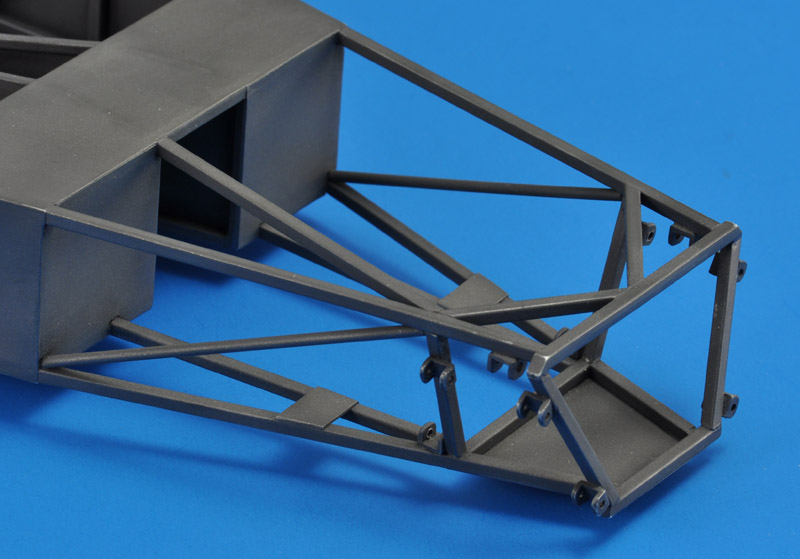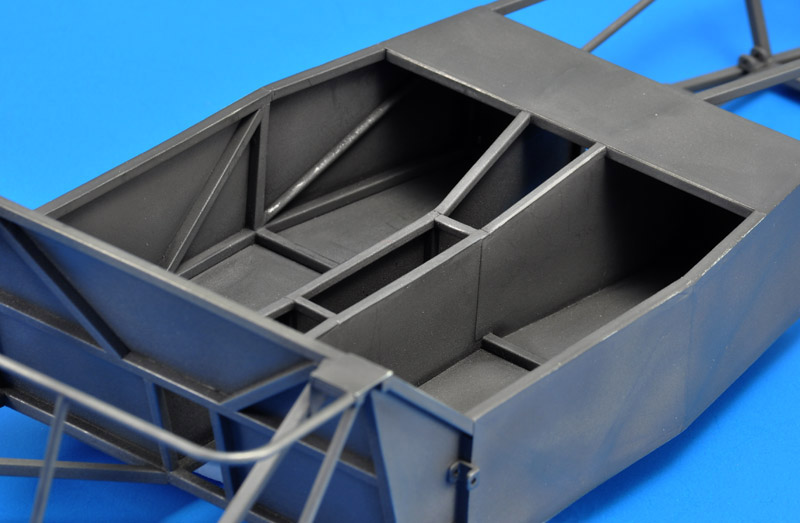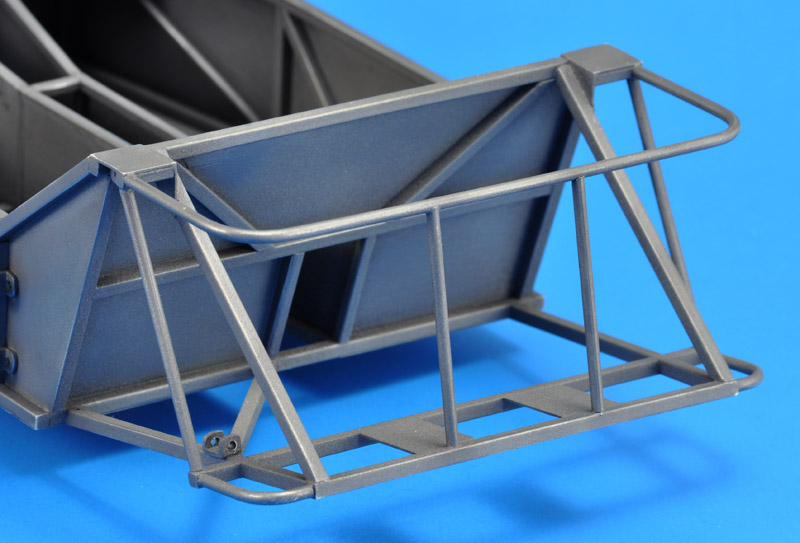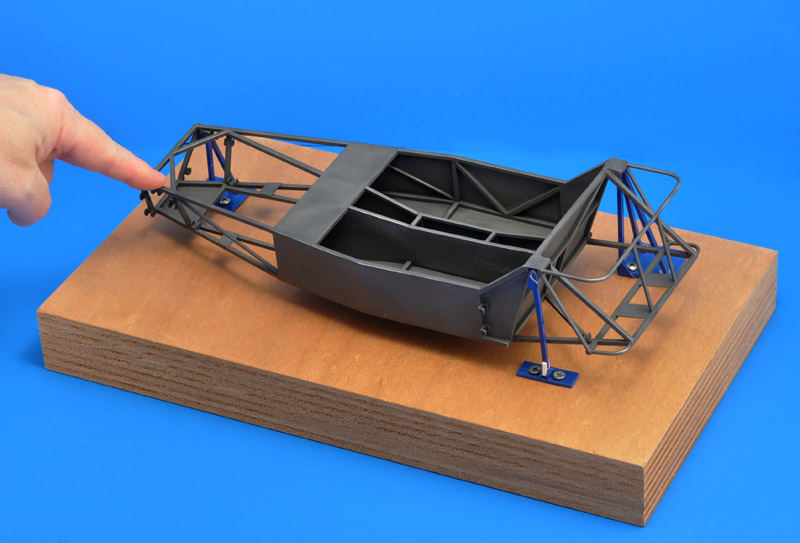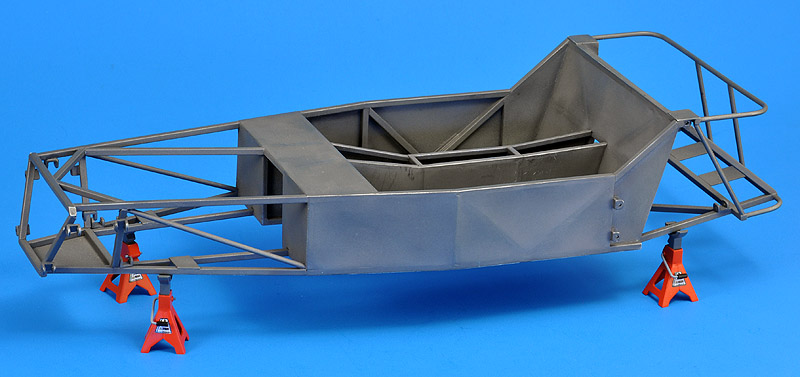| I bought four meters of 2.5 mm square plastic rod, one meter of 2.0 mm square plastic rod, and one meter of 2 mm plastic round rod. Using the drawings and instructions in Ron Champion's book, I went to work. I built the lower side of the frame on the drawing of page 47, scanned, scaled to 1 to 10, and then printed. Generally I managed to build the chassis within 0.1-0.2 mm, using calipers extensively. CA glue was used throughout, allowing for fast bonding. I used various improvised tools to jig the parts, like Lego blocks, steel blocks and plastic card. Shown here is the chassis about 30% done. After getting to the roughly 40% point, I took a break to judge the results so far. I used a JLC saw to cut some connections, and realign some tubes to square the chassis.
| 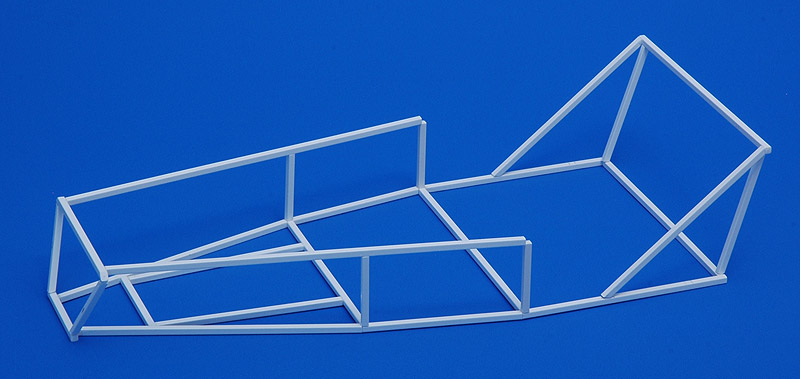
|
